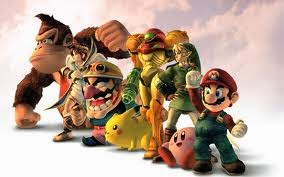Written by @anujitkaur of thewonderwound.blogspot.co.uk
Despite all the technological advances that surround us, we recognise that we are in a ‘reinvent and tweak’ culture. A tablet is launched, bugs are fixed, tweaks are added, and a new version lands. A smartphone is launched, bugs are fixes, tweaks are added, and a new version lands. An application is launched... And it goes on and on. The model is replicated all around us, and partnered with the ‘wants firsts, needs second’ attitude many adopt, the updated phones, tablets, programmes, and applications, continue to sell.
So, what happened with the Wii U? Let’s not sugar-coat it, it tanked. Yes, it is early days and knowing Nintendo, the brand that bought gaming back to life in the late eighties, a future comeback is anticipated. But, shares have plummeted, stars fell to earth, Ganondorf conquered Hyrule. The Wii was the clear winner of the last generation console war, triumphing over the Xbox 360 and PS3, so reason follows that the Wii U would continue the legacy. But, and one kicks themselves here, Nintendo did such a bang up job the first time round, that this isn’t Wii round two, it is the launch of something completely different. And this is where we take a step back.
Remember that engineering I spoke about a little earlier? It is bloody brilliant. The motion control was excellent, and the software reliable. It hardly fails. The design was clean and tight – a small console, about three DVD covers thick. An easy user interface for casual gamers to explore. First party games, allowing adults who played Nintendo as children to play those same games, those same characters with their own children, shaping future generations of gamers. Simplicity, reliability, nostalgia. Check, check, and check. It seems that Nintendo got it so right the first time round (and Nintendo fan Sheldon Cooper would agree despite believing right and wrong are not subject to gradation), that the launch, fix, tweak, launch 2.0 model becomes redundant. It is considered something new.
The console will recover from a weak launch. There is a nostalgia attached to the Nintendo brand that encourages older gamers to gravitate towards it, and the simplicity accommodates casual gamers, widening the audience demographic. It is a shame that the newer console is standing as a new product against improved consoles – improvements allude to a better experience as it is built upon something that has already launched, but it will do fine. It is not Wii 2.0, it is another product perfected by Nintendo to mark the latest console war.









0 comments:
Post a Comment